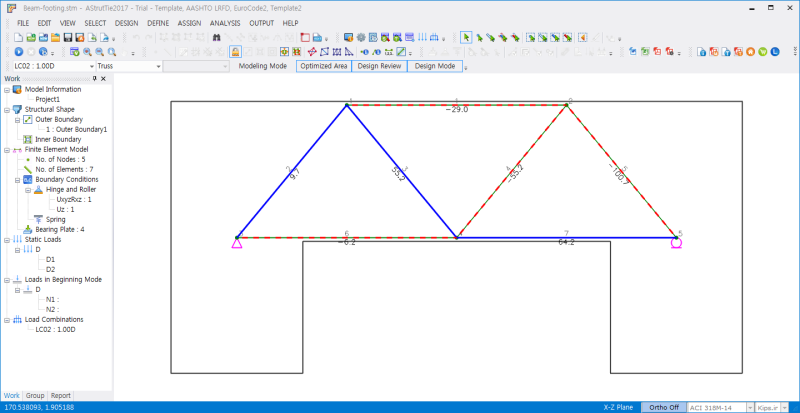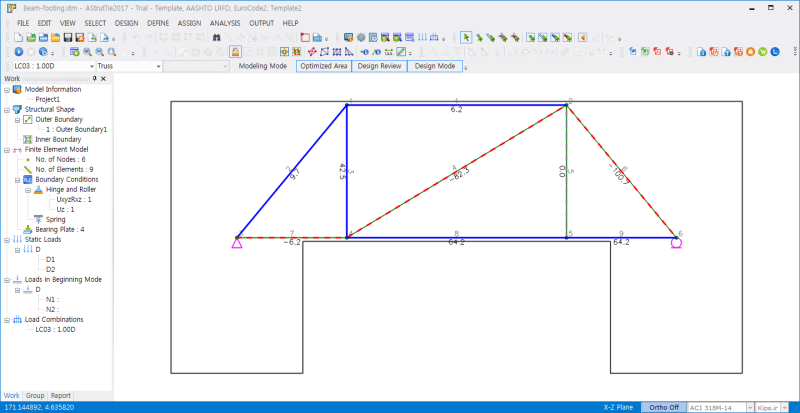dlawrence529
Geotechnical
- Sep 17, 2015
- 23
I'm trying to develop a strut and tie model for a beam connecting an overhead sign structure to a pair of drilled shafts. I'm having trouble developing the truss for the analysis. I've been following ACI publication SP-208 and SP-273 (Examples of Strut and Tie Models), AASHTO LRFD7, and Design of Reinforced Concrete by McCormac and Brown. All these publications show examples using the general truss configuration shown in the attached file. Is it correct that this truss is considered unstable? If so, how can it be used for design?
All the examples show symmetric applied loads, so the forces can be easily calculated. My problem does not have symmetric applied loads, so I am having trouble resolving the truss member forces. I have a few questions:
-Has it been so long since I have analyzed a truss that I'm completely out in left field?
-Does anyone have a recommendation for a truss configuration for my problem?
-Would it be appropriate to consider two separate analyses for my problem and use the more conservative rebar? This would use two symmetric loading cases(F1=F2=-50kips and F1=F2=120kips)
-Are the applied loads so close to the interior face of the drilled shafts that I don't need to consider a strut and tie model at all?
All the examples show symmetric applied loads, so the forces can be easily calculated. My problem does not have symmetric applied loads, so I am having trouble resolving the truss member forces. I have a few questions:
-Has it been so long since I have analyzed a truss that I'm completely out in left field?
-Does anyone have a recommendation for a truss configuration for my problem?
-Would it be appropriate to consider two separate analyses for my problem and use the more conservative rebar? This would use two symmetric loading cases(F1=F2=-50kips and F1=F2=120kips)
-Are the applied loads so close to the interior face of the drilled shafts that I don't need to consider a strut and tie model at all?






